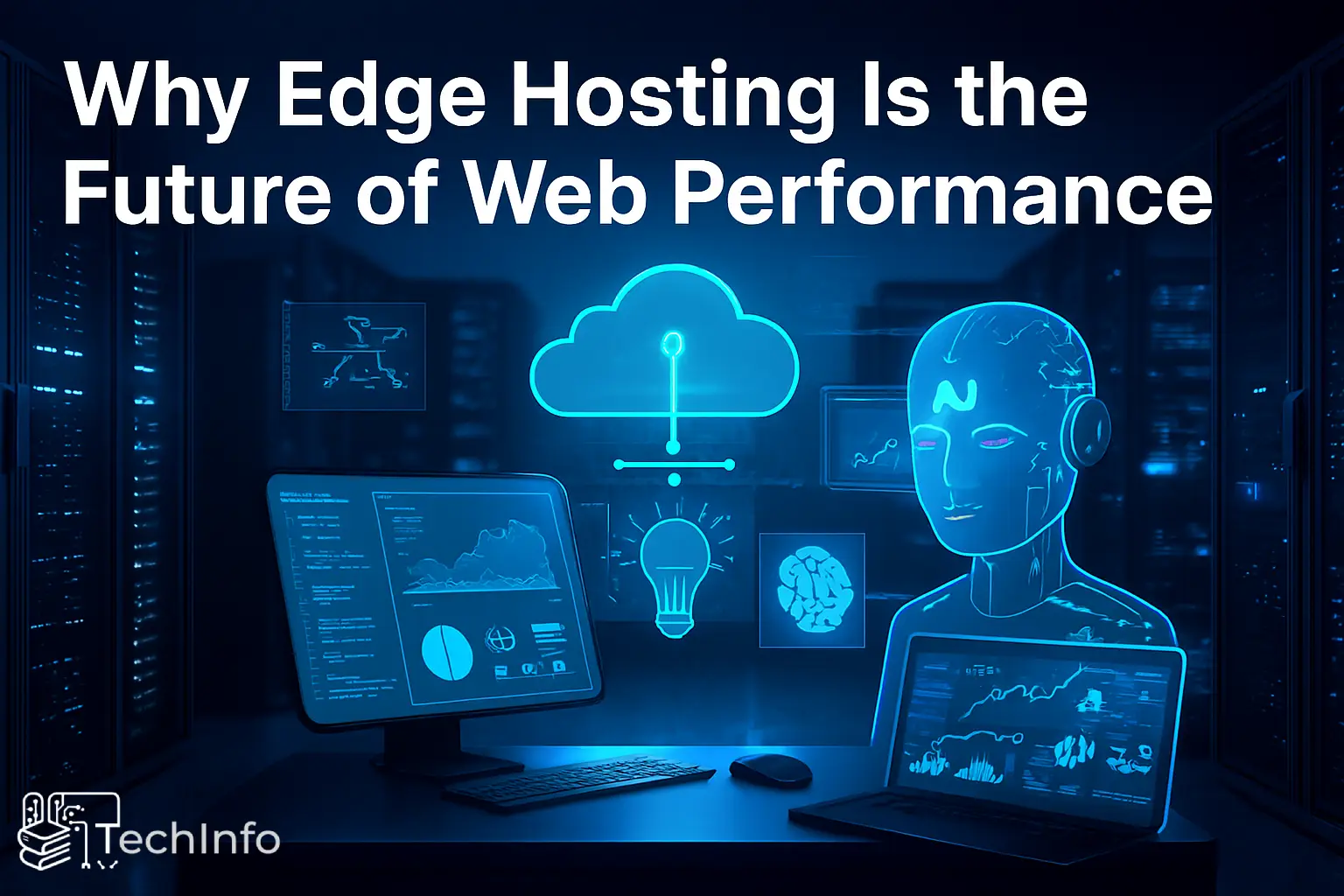Why Edge Hosting Is the Future of Web Performance
In the race for digital dominance, speed is the ultimate metric. Every millisecond shaved off a page load or transaction time directly translates into higher conversion rates, lower bounce rates, and better SEO rankings. While cloud computing successfully solved the problem of scale and availability, it could never fully solve the problem of distance.
The End of Latency
Edge hosting is the strategic deployment of micro-data centers, known as edge nodes, physically closer to the end-users. Instead of housing all application logic and data in a centralized core cloud region, edge hosting pushes content delivery and even complex computational workloads to the very ‘edge’ of the network. This radical shift is why edge hosting is no longer a niche service. But it is rapidly becoming the standard for modern web performance in 2026.
The Latency Challenge:- Why Distance Matters
To appreciate the power of the Edge, we must first understand the fundamental constraint of the traditional web: Latency. Latency is the delay experienced before a transfer of data begins following an instruction for its transfer. In simple terms, it’s the time it takes for a request to travel from a user’s device to the server and back.
- Traditional Cloud Model: A user in Europe loads a website hosted in a central US cloud region. The request must travel thousands of miles, crossing oceans and multiple network hops. Even at the speed of light, this distance introduces a minimum latency of 80ms to 150ms.
- The Edge Solution: With edge hosting, the content is cached or even computed at a node, potentially only a few miles away. This can slash latency to as low as 5ms to 20ms.
This significant reduction makes everything from scrolling a news feed to conducting a real-time multiplayer game feel instantaneous. As discussed in our look at the top hosting technologies of this year, this is the foundational shift driving speed across the entire digital ecosystem.
Key Pillars of Edge Hosting
Edge hosting relies on a sophisticated architecture that integrates tightly with existing infrastructure. These are:
1. Distributed Edge Server Networks: Unlike monolithic cloud regions, an edge server network comprises thousands of smaller, modular server locations. Engineers strategically place these locations in urban centers, connect them to local ISPs, and optimize them for speed and low power consumption.
- Caching & Static Assets: The most immediate use is caching static content (images, CSS, JavaScript). When a user requests a file, the edge node serves it directly, often achieving near-zero latency.
- Dynamic Content Processing: Crucially, modern edge nodes are now powerful enough to run serverless functions and process dynamic data. This means even complex API calls and personalized content can be handled at the edge, rather than being sent back to the origin cloud.
2. Seamless CDN Integration: The Edge is essentially the evolution and merging of traditional Content Delivery Networks (CDNs) and cloud computing. The latest CDN technology is now fully integrated with the Edge, allowing businesses to push all their content and even application logic into the distributed network with a single configuration. This integration allows for:
- Smart Routing: The network intelligently determines the fastest path for a user’s request, automatically directing it to the nearest, healthiest edge node, optimizing latency even if an edge node is temporarily congested.
- Global Accessibility: By expanding the number of points of presence (PoPs) globally, edge hosting ensures that businesses can provide a consistently fast experience to users regardless of their geographical location.
Edge Hosting’s Impact on Business and Applications
The benefits of edge hosting extend far beyond simple website speed, revolutionizing mission-critical applications.
| Benefit | Description | Key Industry Impact |
| Ultra-Low Latency | The primary advantage, crucial for real-time interactions, cutting response times to under 50ms globally. | Financial Trading (instant execution), Gaming (lag-free multiplayer). |
| Reliability and Resilience | If one edge node fails, traffic is instantly rerouted to the next nearest one, minimizing regional downtime. | E-commerce (maintaining 100% checkout availability), Healthcare (reliable patient data access). |
| Compliance and Data Locality | Edge nodes can be configured to store and process data within specific geographical borders, helping businesses comply with strict data sovereignty laws (like GDPR). | Global Enterprises and Government Services. |
| Security Improvement | Edge security policies can filter out threats and block DDoS attacks closer to the source before they overload the main cloud infrastructure. | All online businesses benefit from enhanced, distributed security. |
The Symbiotic Relationship with AI-Driven Hosting
Edge hosting technology doesn’t operate in a vacuum; it thrives on intelligent automation. The enormous network of thousands of edge nodes generates massive amounts of operational data—traffic patterns, server health, localized load metrics, and security alerts. This is where AI-driven VPS hosting and optimization become essential. AI systems process this data in real-time, enabling the network to:
- Self-Heal: Automatically isolate and repair edge nodes that show predictive signs of failure.
- Optimize Resource Placement: Decide precisely which files and dynamic functions should reside on which edge nodes for maximum performance.
- Prevent Congestion: Reroute traffic flows around predicted bottlenecks before they even form.
In short, the Edge provides the speed and proximity, while AI provides the necessary intelligence to manage its scale and complexity. Without AI, the Edge would be unmanageable; without the Edge, AI optimization would be limited by distance.
For a deeper exploration of how this intelligence is applied to dedicated computing resources, here is are article that explores AI-driven VPS hosting in detail.
Conclusion:- Future-Proofing with Edge
Edge hosting is the definitive answer to the escalating global need for speed and localized content delivery. By pushing computing power closer to the user, it ensures ultra-low latency, enhanced reliability, and better compliance. The technology represents a monumental shift away from centralized cloud infrastructure and toward a truly distributed, high-performance web.
For businesses aiming to provide a world-class user experience in 2026, integrating edge solutions is the necessary step to future-proof performance and dominate their digital sector.







